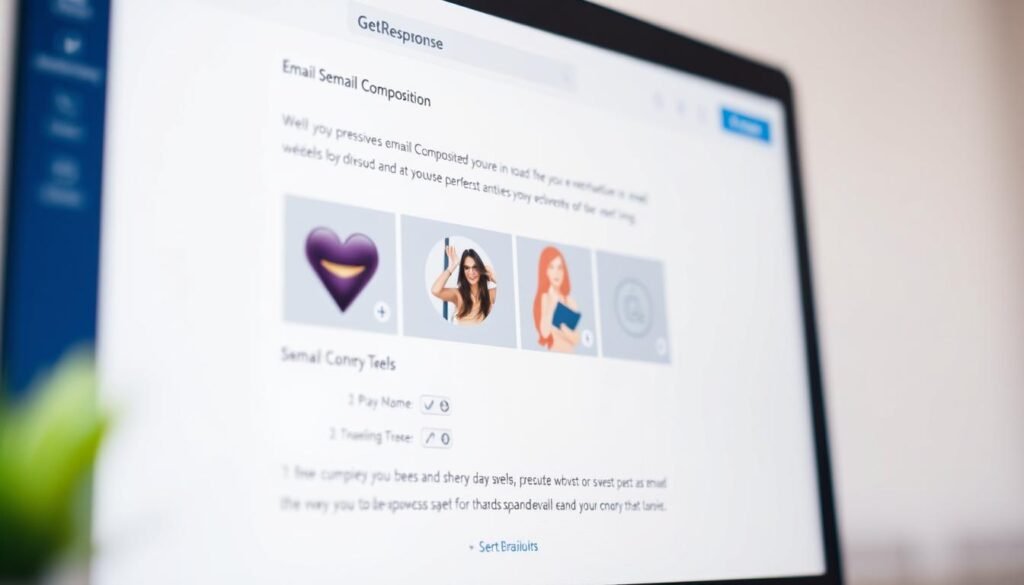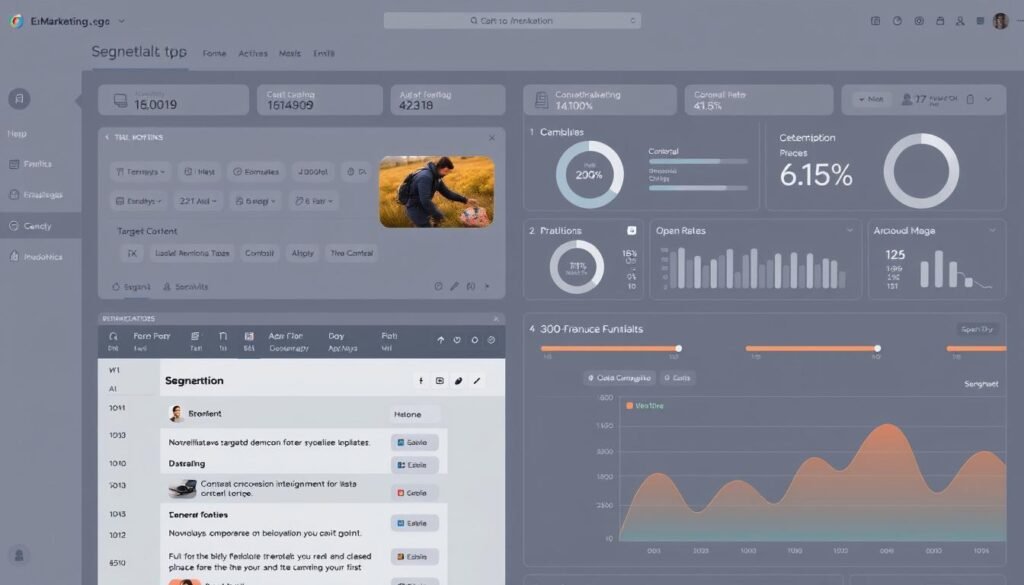Ready to stop guessing and start building messages that actually perform? You’ll get a pragmatic path from signup to your first production-ready campaign on the getresponse email marketing platform. Learn how to craft compelling content that resonates with your audience and drives engagement. With step-by-step guidance, you’ll not only design eye-catching emails but also optimize your strategy for maximum impact. Start seeing results quickly by using getresponse for emails and watch your campaigns thrive. As you embark on this journey, it’s important to recognize the numerous reasons to change email marketing tools. This platform not only enhances your email deliverability but also provides advanced analytics to refine your strategies. Embrace these changes and discover how streamlined processes can elevate your marketing efforts and improve your overall results. By leveraging the powerful features of GetResponse, you can automate your email sequences and segment your audience for personalized communication. Curious about what is GetResponse email marketing? It’s a comprehensive solution designed to enhance your outreach and conversion rates through innovative tools and insights tailored for your business needs. Embrace the opportunity to elevate your marketing efforts and achieve lasting success with data-driven strategies.
The platform offers a free trial of premium features and a guided dashboard that reduces friction. After confirming your account, you gain access to Quick Actions, a checklist, templates, a drag-and-drop editor, and live chat support.
This guide focuses on meaningful choices: pick the right message type, use autoresponders or newsletters where they fit, design with templates or the AI generator, and schedule sends that match your plan and audience.
Along the way, you’ll learn how to prioritize relationship-first marketing over blasts, how to keep data clean, and where the platform shines or needs evaluation. The goal is clear: give you the tools and confidence needed to act fast and measure results.
Key Takeaways
- Sign up, confirm access, and use the guided dashboard to move quickly.
- Choose the right message type—newsletter or autoresponder—based on goals.
- Apply templates, the drag-and-drop editor, or AI tools for faster design.
- Focus on list hygiene, double opt-in, and audience filters for better results.
- Use Quick Actions and live chat when you need immediate support.
- Plan sends around audience timing and measurable KPIs for growth.
Email marketing mindset: build relationships, not blasts
Collecting email addresses is easy; keeping attention takes steady value and respect.
Think of your list as a group of customers, not a target file. Email marketing works when you earn permission and deliver useful content over time.
Newsletters are recurring value touchpoints you commit to sending consistently. Autoresponders are ordered sequences that welcome and educate new subscribers after a signup event.
Why “the money is in the list” only works with trust, value, and confirmation
That saying is true only when you protect consent. Use double opt-in: visitors submit a form, get a confirmation link, and only then join your email list. This preserves deliverability and respects subscribers.
- Treat marketing as a relationship channel. Earn attention with helpful, regular messages—not cold blasts.
- Segment for relevance. Group subscribers by interest and behavior so content matches needs and reduces churn.
- Set a clear cadence. Tell people what they will receive and honor that order of messages.
| Approach | Primary Benefit | Recommended Action |
|---|---|---|
| Newsletter | Ongoing engagement | Publish a regular schedule with value-led content |
| Autoresponder | Automated onboarding | Trigger sequences after confirmation and map behavior |
| Double opt-in | Better deliverability | Require a confirmation click before adding to the list |
| Segmentation | Higher relevance | Use interest tags and activity filters within your platform |
Finally, use platform resources and a short video tour for practical setup tips. For community feedback and a deeper platform review, see the review.
How to send an email in GetResponse?

Start by creating a free account on the GetResponse homepage and confirming your address. After verification, complete basic profile details. No credit card is required for the trial and you get immediate access to the dashboard and quickstart checklist.
Explore the dashboard and quick actions
The dashboard groups common tasks so you act fast. Use Quick Actions for newsletters, forms, landing pages, contacts, and autoresponders.
Tips & Tricks and live chat are available if you need help during setup.
Build your list and import contacts
Create a new list under Contacts, then add entries via CSV, one-by-one, or integrations from your website forms.
Map fields like Email, First name, and Company so you can personalize subject lines and segment subscribers later.
Create and design a newsletter
Open Email Marketing > Create newsletter. Choose templates, the AI generator (trial limits apply), or start with the drag-and-drop editor.
In the drop editor, assemble blocks, images, and a clear button. Align fonts and colors to match your brand.
Test, schedule, and send your first campaign
Select recipients, set From and Reply-To, then preview on mobile and desktop. Send a test to your inbox, validate links, and confirm compliance before scheduling.
| Step | Why it matters | Quick tip |
|---|---|---|
| Signup | Unlock dashboard access | Confirm address immediately |
| Import list | Enable personalization | Map fields during CSV upload |
| Design | Improve engagement | Use clear CTA buttons |
Optimize your GetResponse email campaign for engagement
A concise subject and a clear preview can decide whether subscribers open your message or scroll past.
Craft subject lines and previews that earn opens
Write short subject lines that promise value and pair them with compelling preview text. Use the platform’s subject preview tester to see renderings across clients.
Personalize with mapped fields and dynamic content
Import mapped fields like first name and company from your CSV so you can insert personal tokens in subject lines and body content. Dynamic blocks tied to accurate data boost relevance and clicks.
Use templates and the HTML editor to streamline production
Pick from 150+ templates, customize in the drop editor for consistent structure, or switch to the HTML editor for pixel control. The AI generator is available but limited in trial accounts.
Choose the best time for your newsletter
- Start with business hours in your audience’s main time zone and iterate using open and click data.
- Segment by recent activity and suppress inactive addresses to protect deliverability.
- Test subject lines, CTA wording, and hero imagery before scaling successful variants as your next first email for new segments.
| Action | Why it matters | Quick tip |
|---|---|---|
| Subject test | Improves open rate | Preview across clients |
| Template + editor | Speeds production | Use reusable modules |
| Send timing | Boosts engagement | Start with local business hours |
Track opens, clicks, and conversions, then refine your email marketing strategy for the next campaign.
Segment, automate, and scale your email marketing strategy

Segmenting your list and automating routines lets you scale campaigns without adding busywork.
Group contacts by interest, offer downloaded, lifecycle stage, or recent engagement. Use auto-updating segments so new signups flow into the right buckets as your list grows.
Segmentation ideas: interests, offers, behaviors, and auto-updating groups
Segment by content category, product interest, and engagement level. That makes each marketing message more relevant and increases clicks. Auto-updating groups in GetResponse keep segmentation current without manual work.
Newsletters vs autoresponders vs RSS-to-email: when to use each
Use newsletters for timely announcements and curated content. Choose autoresponders for onboarding sequences and education funnels. Pick RSS-to-email when you want new blog posts syndicated automatically.
Permission-first growth: forms, double opt-in confirmation, and clean lists
Build acquisition with embedded forms and landing pages that promise real value. Require double opt-in confirmation, remove bounces, and sunset inactive addresses to protect deliverability. In addition to capturing leads effectively, ensure your content provides genuine engagement. Offering resources like home decor tips and ideas can incentivize subscribers to remain active and interested in your offerings. Regularly evaluate your subscriber list to maintain a healthy engagement rate and refine your messaging for a more targeted reach.
- Pair evergreen autoresponders with periodic campaigns mapped to funnel goals.
- Leverage marketing automation to trigger branches based on opens, clicks, and purchases.
- Standardize names for lists, tags, and automations so your team scales responsibly.
Deliverability, tools, and integrations: what to know right now
Reliable inbox placement starts with steady sending rhythms and messages that respect subscriber choice.
Permission-first practices and good hygiene matter more than tricks. Follow consistent cadence, prune inactive addresses, and send value-led content that gives clear frequency and topic choices.
Boost inbox placement: consistent sending, value-led content, and clear choices
Authenticate your domain (SPF, DKIM, DMARC) and monitor sender reputation. Remove hard bounces quickly and suppress chronically inactive segments to reduce spam signals.
Be explicit in footers and the preference center about how subscribers can change settings or opt out. This lowers complaints and helps mailbox providers trust your marketing.
SendGrid via Zapier vs GetResponse sending: current limitations and workarounds
GetResponse does not let you route native sends through a custom SMTP such as SendGrid via its app. Zapier’s GetResponse actions cannot proxy native sends through external SMTP.
If you must dispatch via SendGrid, create Zaps that use Zapier’s SMTP app or the Send Email (SendGrid) action. Note: those sends operate outside the platform’s native tracking and automation, which can fragment data and complicate reporting.
- Pros cons: Native GetResponse sending gives integrated tracking and automation; external SMTP may offer deliverability control but fragments data.
- Use platform resources—Tips & Tricks, help center, and live chat—for deliverability questions and fast troubleshooting.
- Record a short internal video SOP so your team follows the same verified send checklist.
| Focus | Action | Result |
|---|---|---|
| Authentication | Set SPF, DKIM, DMARC | Improved reputation and fewer spam placements |
| Hygiene | Double opt-in; remove bounces | Higher deliverability and lower complaints |
| Integrations | Use Zapier SMTP or SendGrid action if needed | Sends outside native pipeline; monitor data loss |
| Process | Checklist + internal video SOP | Faster onboarding and fewer mistakes |
Before each send, verify authentication, confirm the unsubscribe link, test links, and check segmentation filters on the page. For platform feedback and customer pros cons, see our detailed review at GetResponse review.
Conclusion
Start small, measure often, and scale winners with documented processes.
You’re now equipped to create an account, build a clean list, and send your first email with confidence. Keep the relationship-first mindset: segment by interest, deliver useful content, and protect permission as your core rule.
Make sure each campaign has a single goal, a clear CTA, and a tight audience filter that matches your plan and business objectives. Track opens, clicks, and conversions and iterate on timing, subject lines, and personalization as engagement data arrives.
Maintain list hygiene and capture SOPs so your team repeats success and reduces errors. Over time, this approach will turn basic email marketing into reliable growth for your business.

